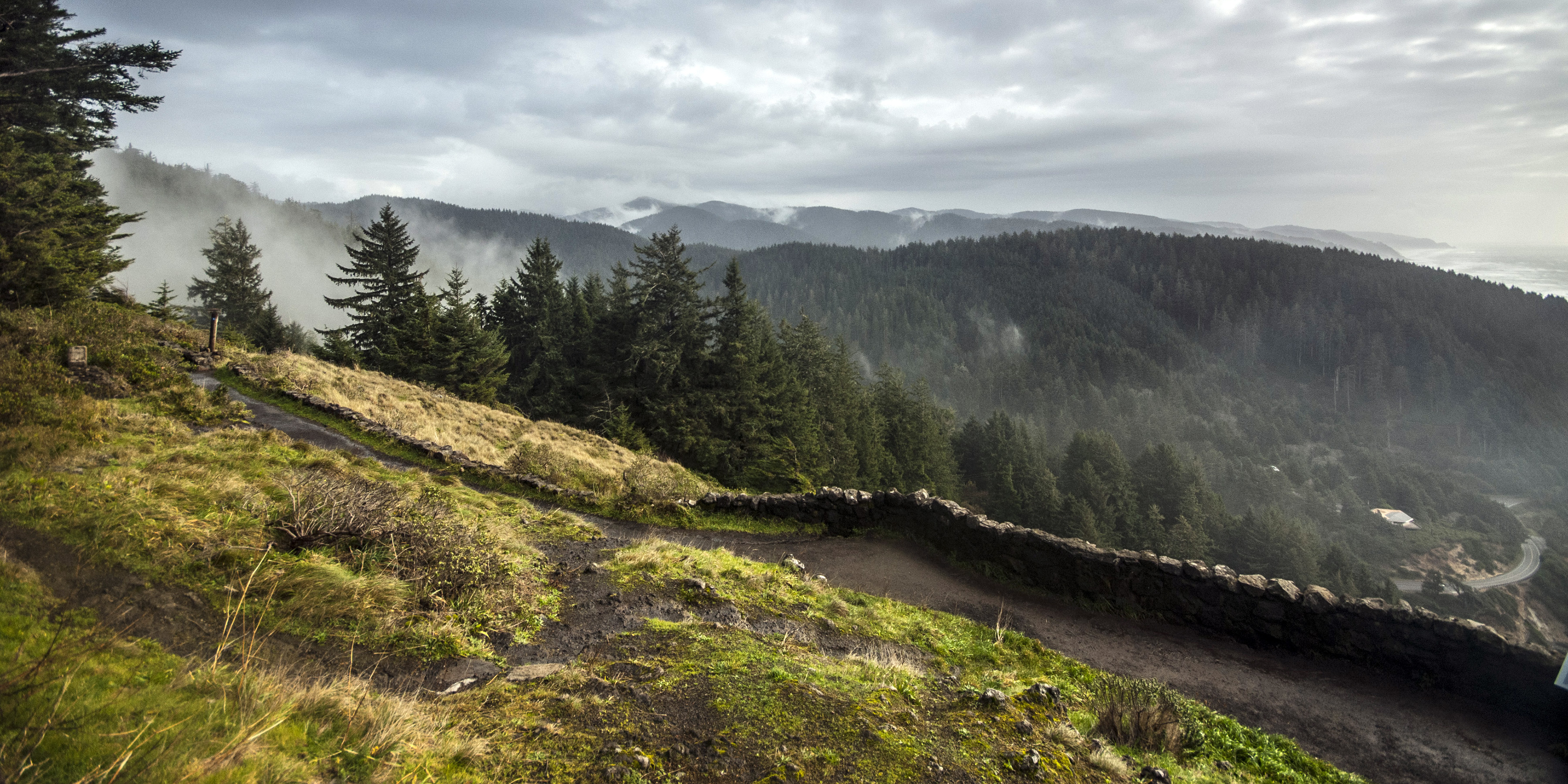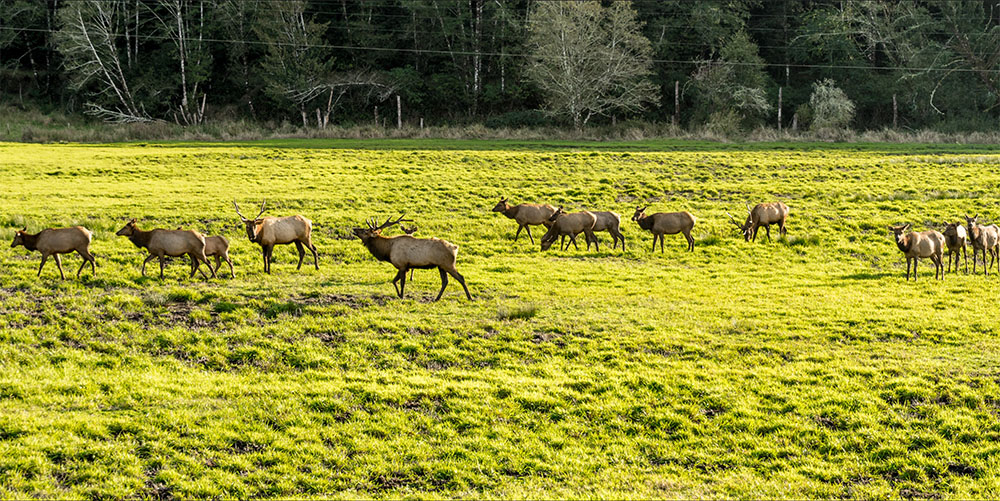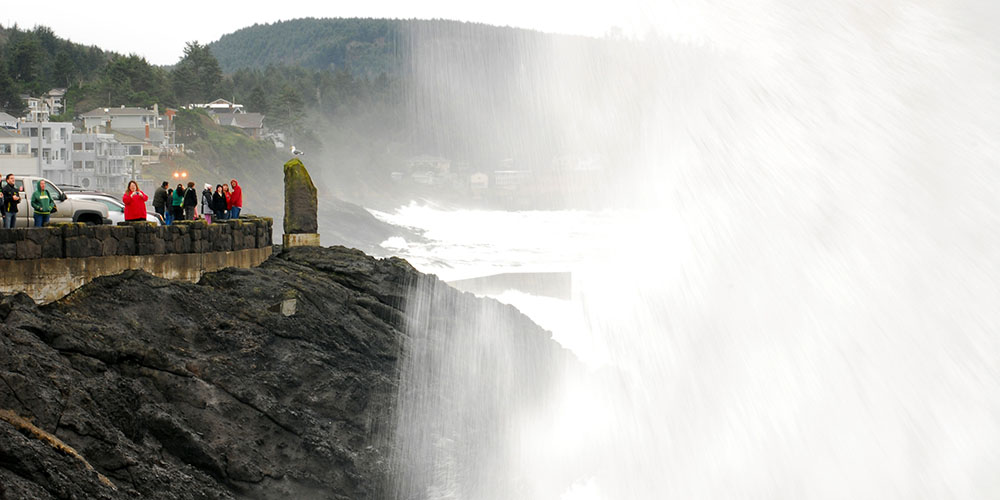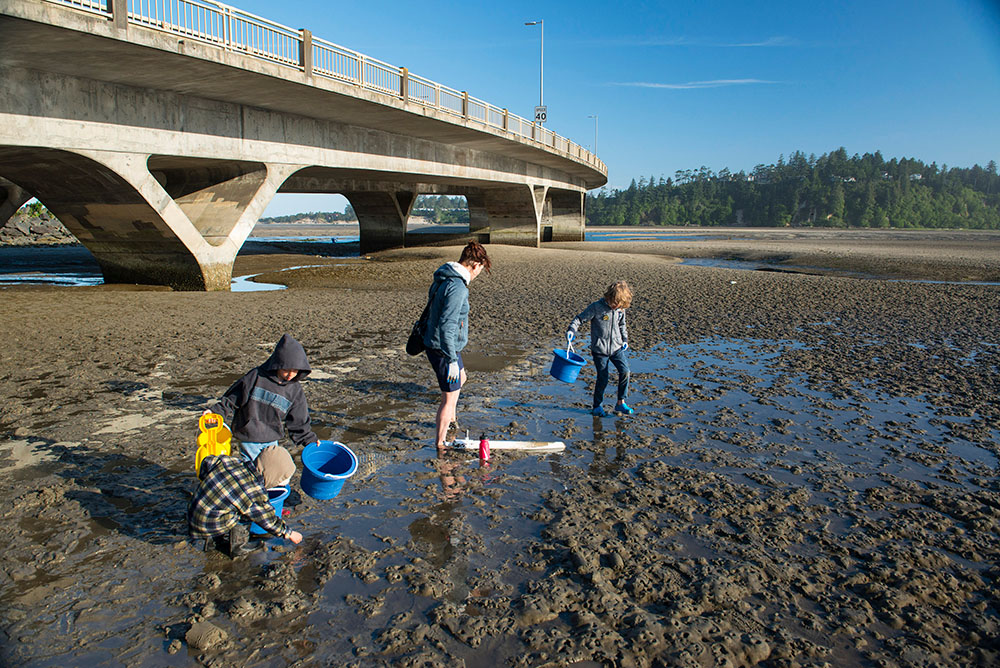
As beautiful fall weather winds down and the rains begin in earnest, it’s easy to curl up inside with a book and brew and swear off the outdoors for a bit. But if you do, you’ll be missing out on a spectacular season out on the stunning Oregon coast. Winter is a great time to make the trip west and to really rejoice in the wildness that is our coastline. From fresh seafood you can catch yourself to woolly winter storms and abundant wildlife, there’s never been a better time to see what lies over the foggy Coast mountain range. We’ve put together five reasons why now is the time to start planning your coastal getaway.

No Crowds, No Traffic
With the soaring popularity of Portland and the Oregon coast, in summer months the slog to the beach can be one long slow mess of traffic. Winter changes everything. Sure, there may be a fair bit of rain coming down on the windshield as you crest the Coast Range and descend to the waves, but you won’t be sharing those raindrops with very many people once you arrive. No more absurdly high hotel rates either. In the off-season, room prices plummet as the crowds thin out, making this the best time to snag a great deal on a weekend getaway. Rain and cold also empty out the beaches. No fighting for parking at your favorite strand; you can walk for miles along empty gray coast, hunting agates and reveling in the wild beauty. Be sure to bring warm dry clothes to change into after your adventures. There are plenty of cozy coffee shops ready to gather you in with a hot mug and views of the seas as you explore the various coastal communities along your trip. If you’re still unsure whether winter at the coast is for you, check out the video created by our friends at Uncage the Soul. Consider it your invitation to come explore.

Abundant Wildlife
With weather wild at sea and in the hills, winter is the ideal time to see more wild animals as they seek calmer quarters near the coast. Elk move down from the mountains, sea lions move in from the wild stormy waters, and birds are abundant as well. And the biggest animals of all can be seen spouting of the coast during the winter whale migration in January! With fewer people on trails or beaches, and less cars on the road, you’ll be able to commune with the beautiful animals that call our coastline home if you are quiet and move slowly. Be sure to respect all wildlife you encounter, and maintain safe distances if you choose to take photographs. Wild animals may behave unexpectedly if people attempt to move too close. For ideas on where to go (and what you’ll see when you get there), check out our guide to the best spots for wildlife viewing.

Storm Watching
Rain and wind are inevitable on the coast come winter. Embrace the weather by seeking out the storms and experiencing the full force of the elements that shape the Oregon coast, making it what it is. This type of exploration is not for the faint of heart, or for the unprepared. Be sure to suit up in appropriate rain gear, rubber boots, hats and gloves. Getting wet is to be expected, no matter what your garb, so a warm dry change of clothes will do wonders after you’ve weathered the storm. Arranging for a cozy room to stay in nearby or recharging at one of the numerous cabins and yurts available in the state park system will ensure you’re dried out in no time. Waves are biggest at high tide, so it helps to check the tide tables before you hit the beach. Always be aware of sneaker waves and be mindful of soft cliff edges. Slides are frequent in the rainy season as land gets saturated.

Freshly Caught Seafood
Locals know that the best time for crab and clams is when there aren’t as many people attempting to catch them! Also, winter minus tides make for ideal clamming. Whether you’re after crab or clam…or even winter steelhead runs, the Oregon coast holds an bellyful of abundance. If you are new to the sport, we’ve put together handy guides on how to and where to go, taking all of the guesswork out of it. Winter steelhead fishing’s brief window of opportunity should not be missed if you’re an avid angler. To get your best shot at the fish, check out the Rogue River and the Wilson River. The Tillamook Bay Heritage Trail is a great way to explore a wonderful fishing region as well. Somehow, a fish always tastes better when you’ve caught it yourself. Be sure to check regulations for proper licensing and restrictions before you go.

Extreme Photography
First, be safe and be smart, as sneaker waves and cliffside locations can pose a real threat. Wild weather, wildlife, crashing waves, and delicious eats….pretty much the staples of an outdoor lover’s Instagram feed these days. The coast in winter provides opportunities at every turn for spectacular photography. Whether you’re taking snaps with your iPhone or hunkering down with a DSLR and tripod for the evening sunset, you won’t be disappointed. Explosive waves in places like Thor’s Well, foggy misty views of the Oregon Islands National Wildlife Refuge, and sleepy coastal communities like Coos Bay offer something for all skill levels and interests. If you are just getting the ropes of outdoor photography, we offer multiple great guides on how to get started making epic photos of your own, no matter the season. Please do remember to practice Leave No Trace principles as you’re searching out that perfect shot. Viral images can have lasting effects on the beautiful places we all enjoy.